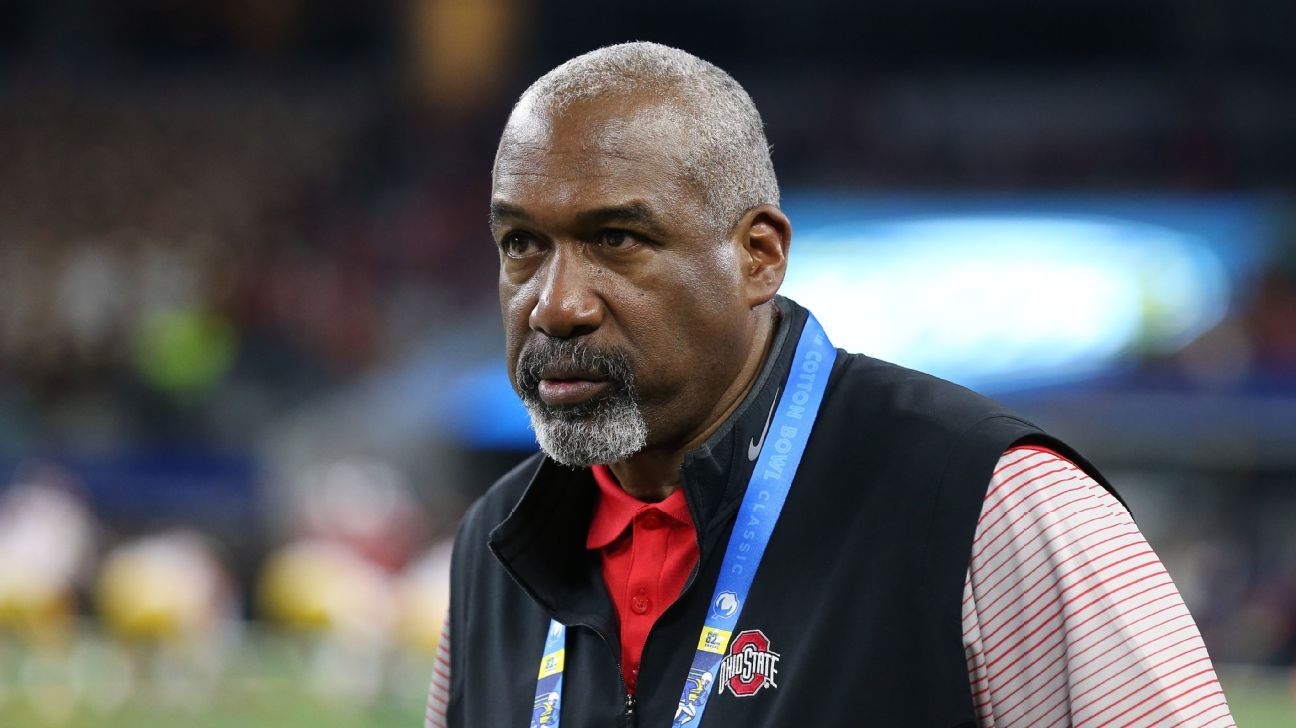Ohio State athletic director Gene Smith and his Big Ten colleagues prefer to keep a nine-game league schedule, even if it limits the number of contests against teams from their alliance with the ACC and Pac-12.
Smith, speaking Wednesday with reporters in Columbus, Ohio, said the Big Ten athletic directors “walked away” from the idea of reducing the conference schedule from nine games to eight, which would have allowed more alliance matchups. The three-league partnership, formed in the wake of Oklahoma and Texas announcing their departures from the Big 12 to the SEC last year, included a football scheduling component for more future games.
Pac-12 commissioner George Kliavkoff said in December that his league would immediately reduce its conference schedule from nine games to eight as long as the Big Ten did the same. The ACC currently plays an eight-game league schedule, although multiple future models, including a nine-game slate, were discussed at the league’s recent athletic director meetings, sources told ESPN’s Andrea Adelson.
If all three conferences end up with nine-game league schedules, the number of spots for alliance matchups would be significantly reduced, especially if annual rivalry games such as USC-Notre Dame, Iowa-Iowa State and Florida State-Florida continue regularly.
“I think the whole alliance piece can have some positives for the teams that maybe don’t have those other rivals,” Miami athletic director Dan Radakovich told Adelson. “So I think we have to see if we can really get into that. But remember football scheduling is not something that changes on a dime. So we’ll have to have those discussions.”
Smith said the Big Ten athletic directors pivoted away from a reduction in league games soon after the alliance was formed. A source said the Big Ten always has prioritized its own conference scheduling format before evaluating how it would impact opportunities outside the league.
“Many of us felt nine was still right for us in our scheduling model,” Smith said. “We felt that conference contests, from a TV partner point of view, were just as valuable. So we decided to kind of walk away from that a little bit. That doesn’t mean it might not come back up, but at that point in time, we walked away.”
Like the ACC and other leagues, the Big Ten is discussing the possibility of eliminating divisions, according to Smith, who said he doesn’t have a strong preference on what the league decides. The Big Ten has used two division models in the past decade, and the current setup, featuring East and West divisions, has only produced champions from the East. The league likely will make a decision during its spring meetings in May. Smith said he wants any future league scheduling model to ensure players visit in every conference venue during their four-year careers.
Smith also said he expects the College Football Playoff to eventually expand to 12 teams, despite stalled negotiations among the leagues. Although the proposed model would allow teams ranked No. 5 through No. 9 to host first-round games on campus, Smith likes the flexibility to move games to indoor venues because of weather concerns.
“I know our fans rally around that and they’d like to host Alabama up here, but now we have the flexibility to move into domes,” Smith said. “We can move to [Lucas Oil Stadium] or Ford Field or Minneapolis or whatever, if we ended up hosting. That’s important because who knows what the inclement weather could be like at that time of year at any of our places in the North, so we need that flexibility.”
